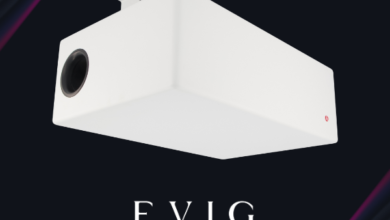Exploring the SASE Framework – The Future of Network Architecture

Enterprises embracing remote work and the cloud must ensure that distributed users, branch offices, and SaaS can connect securely and without impacting performance. SASE is a framework that addresses these needs by combining security capabilities into a single solution that runs on SD-WAN infrastructure.
Core SASE technology includes identity-based Zero Trust network access, CASBs and firewalls, and routing optimizations to cut latency. It helps protect distributed environments with a less invasive approach that doesn’t require a VPN.
What is SASE?
With the rise of remote workers and software-as-a-service applications, data is moving from centralized IT to edge offices, branch locations, and mobile devices. Traditional security approaches and technologies have yet to be able to provide the level of protection these organizations need. SASE addresses this need by bringing security controls to the network edge, where they can protect users, devices, and applications more effectively.
The unified SASE framework offers networking and security capabilities in one streamlined service, eliminating the need to deploy and manage multiple-point solutions. This streamlines deployment, reduces IT costs, and improves visibility and management. It also reduces complexity, enabling enterprises to focus on strategic IT initiatives.
On the security side, leading SASE services offer a full range of threat detection and prevention features that protect users, data, and cloud applications from threats such as man-in-the-middle attacks, spoofing, and malware. These SASE services also protect WANs by providing secure encryption and routing traffic to points of presence (PoPs) close to the user.
On the network side, SASE delivers low-latency connectivity to remote workers, branches, and data centers via a global fabric of PoPs. It helps to optimize performance and eliminate the need for costly MPLS lines. It also enables flexibility for business scenarios requiring more bandwidth or quicker responses.
How is SASE Different from Point Solutions?
Existing networking approaches and technologies can’t provide the security and access control levels that digital organizations need. With more data and applications moving to cloud services and remote users and more access requests from the edge than from the core, the network must be reconfigured. SASE delivers a secure, scalable way to do just that.
Rather than rerouting traffic to the data center or corporate headquarters, SASE uses distributed points of presence (PoPs) to process requests closer to the user. It improves performance and reduces costs by eliminating the need to backhaul data across long distances. It also allows IT teams to apply identity-based, Zero Trust access policies at the edge, regardless of how users connect to third-party applications, devices, or services.
A unified security framework, deployed via SASE on SD-WAN infrastructure, helps meet compliance requirements such as GDPR by providing organizations the visibility and control to segregate sensitive data and enforce selective decryption. SASE also provides WAN optimization features such as dynamic routing that can help increase bandwidth to the edge when and where needed.
While SASE is an essential part of the future of network architecture, many challenges remain to overcome. One of the most significant is vendor lock-in, which can result in a single point of failure and exposure to cyber threats.
What are the Benefits of SASE?
The most apparent benefit of SASE is improved security and performance. By combining networking and security technologies, SASE offers enhanced defenses against cyber threats such as malware and ransomware while improving the performance of business applications and services over the WAN.
SASE also allows organizations to scale network and security capabilities flexibly. Businesses can quickly deploy new branches or work-from-home policies while protecting users from data breaches and other cybersecurity threats.
Lastly, SASE provides improved efficiencies by consolidating security and networking services into a single platform. It helps organizations reduce costs by eliminating redundant infrastructure and streamlining IT management. SASE is easy to integrate into existing environments due to its cloud-native architecture.
The converged SASE framework is the future of managed networking and security services. It provides:
- A single-pane-of-glass management interface.
- Unified policy enforcement.
- Simplified infrastructure for improved network agility and scalability.
Additionally, the SASE framework enables organizations to provide secure access to cloud apps, SaaS services, and on-prem enterprise systems in a location- and connection-agnostic way. SASE also helps to increase IT/security staff efficiency by reducing the time spent on mundane tasks and allowing them to focus more on value-driven activities. It allows organizations to accelerate digital business initiatives and deliver a better end-user experience.
What are the Challenges of SASE?
To benefit from SASE implementations, enterprises must make the correct considerations beforehand. It includes understanding their cost constraints, current tech stack, or whether they have Internet of Things (IoT) or operational technology devices to protect. It also means evaluating their growth prospects and having clear expansion plans. Enterprises must also do the proper SASE testing to find a solution that fits their scale, deployment, and security needs.
SASE’s unified security framework approach provides better visibility and more comprehensive controls. It also reduces the number of tools that must be managed. It, in turn, helps to eliminate manual errors, which can lead to performance limitations or unnecessary censorship. It also helps to mitigate unauthorized activity by providing access to data that can be used for threat hunting.
However, implementing a SASE architecture can involve reorganizing and sometimes combining network and security teams. It cannot be accessible in hybrid cloud environments where the teams may work across both on-premises and cloud infrastructures.
As SASE solutions become more intelligent and cloud-native, some independent SD-WAN and network security vendors will likely merge with other established providers or acquire them. It can help to converge management consoles and functionality and create a single-vendor SASE solution that will cover the entire network from end to end.




